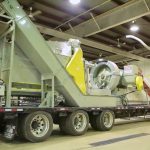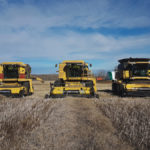
Planning to straight cut canola?
PAMI has a few quick tips to help ensure your harvest hits the bin

PAMI to close Portage la Prairie location
Revenue challenges in recent years blamed for Manitoba site's closure

Old combines hold their own at harvest
A PAMI survey finds canola losses can be minimized by operators who understand their machines and how to set them

Keeping your stored grain cool and dry
With increased storage depth comes increased risk. Are we moving enough air through today’s larger grain bins?

Comfort builds for straight combining canola
New research and grower experiences are answering important questions about straight combining canola in Western Canada. Comfort with the practice rises as more growers explore where and when it might work and how to improve results

Is stored canola at bigger risk than ever?
Huge bins, straight combining and delivery contracts for June and July have all potentially increased the storage risk for canola. But the basics for safe storage — eight per cent moisture, 15 C or less and regular monitoring — still apply

Moisture in or moisture out?
Are you really drying that grain when you turn on the fans?

Shatter losses in straight-cut canola
PAMI research funded by WGRF shows that the type of header makes a difference


